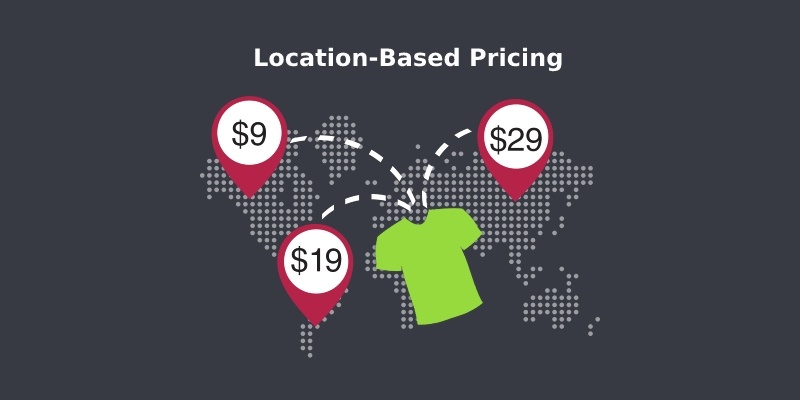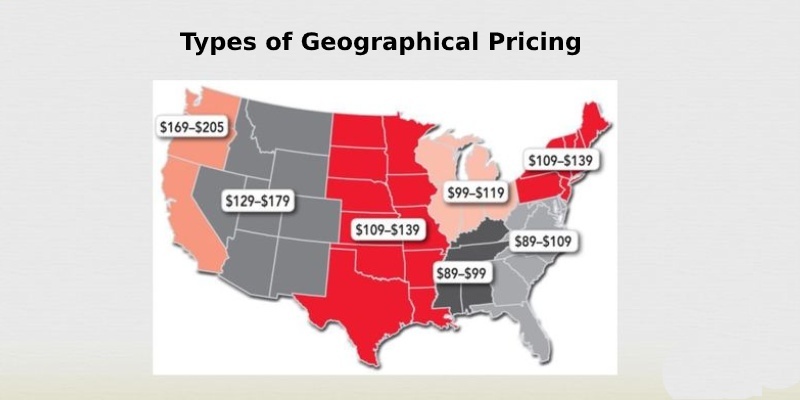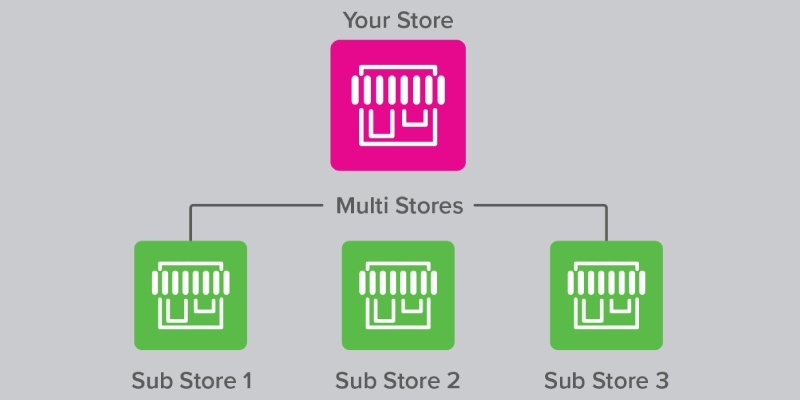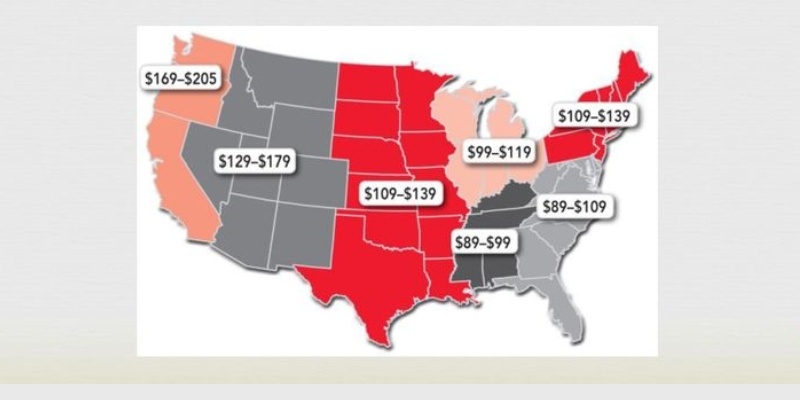Dynamic product pricing for Bigcommerce and Shopify addresses the issue of demand varying from one location to another. Healthcare doesn’t cost the same in New Jersey as it does in California. Neither does health insurance or even car insurance.
Price fluctuation based on geographic location is perfectly normal when it comes to these industries as well as department stores, such as Macy’s and Nordstrom, and many other nationally based businesses.

When it comes to eCommerce sites, a location-based pricing strategy is not illegal, but it is frowned upon.
How would you feel if you lived in Florida and your cousin Billy in Kentucky bought a pair of sunglasses for $50 from the same site that charged you $60? Of course, you wouldn’t be too happy. (Though Billy in Kentucky probably would be!)
Types of Geographical Pricing
There are a number of different factors that must be considered when an organization is operating in multiple countries or regions within one country.
One important consideration includes geographical pricing strategy, which according to local taxation laws and requirements can differ between locations due to varying levels of regulation across borders.

A service provider needs not just to understand its own delivery costs and cost structure but also those from other suppliers who supply both goods as well as online services used by the business such if third-party logistics service providers.
We can divide the geographical pricing model into 3 different categories.
Here are the geographical pricing types and pricing strategies…
Free On Board Geographical Pricing Strategy
In the case of exports or imports, geographic pricing strategies can make transportation more cost-effective.
The seller ships products from Italy to an American buyer who will then need to cover any logistics costs associated with getting it there; this includes both shipping as well as customs fees (charges upon entry).
Once they have been delivered aboard a ship at sea or on land by air cargo carrier for example – once goods leave Italian control–the vendor has no responsibility whatsoever towards these shipments and may go about his business without further ado!
Zonal Pricing Strategy
Zonal pricing is different from regional because it uses zones to determine price points instead of regions.
For example, a company has four zones, each with its own unique challenges. East is the most competitive and West lies somewhere in between.
North of these two extremes is a neutral territory where there’s average competition; south carries significantly less risk but also offers more competitors for potential customers to choose from.
The company reduces prices of its products drastically in the North zone, thereby penetrating that market against competition.
At the same time, it increases their wholesale price exponentially across other regions where they are earning ample margins to overall increase revenue with minimal loss for a business like theirs which needs every penny counts!
The company can go further and offer incentives in the East or West zone, which would make them more dominant before competitors run schemes of a similar kind.
Based on where they operate geographically as well as environmental factors like actual business operations costs within that economic area–the firm will take geographic pricing decisions accordingly.
Uniform Geographical Pricing Strategies
Some companies are able to keep their prices the same regardless of where they live.
This can be useful for those who want to maintain brand equity or don’t want an internal war between dealers, but it might not work well in situations with penetrative pricing since then there will always be just as much product sold at a higher price and it means that considerably high online profit than before.
It’s important to keep prices even across regions so that there is fair competition.
If one region gets cheaper products, they could sell those at lower taxes and charge more in other geographical service areas where taxation may be higher than what you’re used to paying now – shaving off 2%-3%.
Big Brands Are Pricing Their Products This Way
Did you know big brands like Amazon.com, Home Depot, and Staples are already pricing their products this way? There are many factors that play a role in the pricing of a product including:
- Demand
- Distance from the warehouse
- Local / Regional Income Levels
- Local / Regional Competition
- Supply fluctuation
As eCommerce business continues to grow, more and more small and medium-sized businesses seem to need this functionality and come to us asking, “How can I display different pricing for my thousands of products based on a location such as a different state, region, or country and still keep my current eCommerce structure?”
At Optimum7, we were able to implement this functionality for our clients and we tested this in a couple of different ways:
1. Different Sub-stores for Different Locations
To implement this properly, you need to build a different sub-store or subdomain for each of the locations where the service provider’s pricing would vary. For example, if you wanted to display different pricing for three states you would need to add, for example, FL.mystore.com, GA.mystore.com, and NY.mystore.com.

Three Issues:
- You need to integrate all of these sub-stores with your main store so that the orders come from only one admin with the appropriate order value for each location.
- You have to be extremely careful with different invoices for customers from different states, as you run a high risk of mistaken/mixed up invoicing.
- You need to train your staff to handle all of the issues, including complaints that would arise from this setup.
Ultimately, using different subdomains is not a very efficient way of running your eCommerce store unless you are a large organization with sales of over $20 million annually.
2. Forcing All Users to Register
This simply means that we do not display pricing information for users until they register with your store. Based on the location provided, we place them in a different pricing tier.
This works fairly well for B2B eCommerce businesses. However, the sales and conversion rates will drop significantly if it is implemented on a B2C site, simply due to the fact that individuals are reticent about providing registration information (name, address, etc) before they actually decide to buy something.
3. Using jQuery, implement the “allowpriceedit” function to alter pricing based on location (IP address)
This is the most efficient solution we have found for implementing functionality that allows for location-based price differentiation, without interfering with the structure and user experience of the eCommerce store.
It works with very basic functionality that most eCommerce solutions have; “allowpriceedit” feature. This feature was introduced by eCommerce systems to allow the buyer to make an offer on a specific product.
Therefore, in the database, during each session, the price of a specific item can be altered. The problem with this is the fact that this price can only be edited during the checkout process. However, if you are trying to display different prices for different states, these prices must be live on the actual product page.
To address this, we built a script that automatically locates the specific state of the user based on his/her IP, queries of the database on web service for the price of that specific item for that state, and then returns the price for that state back to the user within milliseconds.
Then, when the user adds that item to their cart for purchase, we re-create that product as a child product with the appropriate pricing.
This way, we do not change the product code of the item, and the reporting does not seem like you sold 50 different SKUs if you have actually only sold 1 SKU to 50 different states with different prices.
The functionality works like a charm, which is exactly how Amazon or Staples.com works! You get to sell the same product at different prices for different geographical locations.
During the location-based pricing process, we realized that no matter how frowned upon a system like this may be, your business needs what it needs.
You need to be able to alter the functionality of your eCommerce site to meet market needs and demands.
As highlighted by the options we discussed, it’s essential that you do not alter the customer experience for any functionality you add, no matter how important.
Contact Optimum7 today and let us explain how we can set up this functionality for your Bigcommerce, Shopify, 3DCart. Magento, Miva or Custom eCommerce site!
FAQ – Location-Based Pricing
What is location pricing?
Geographical pricing or location-based pricing is a practice that adjusts the sale price for an item based on where it’s being sold.
Sometimes geographical pricing difference in cost can be determined by how much shipping cost would be to that location, but sometimes other factors come into play too such as what people are willing to pay there – even before accounting for any taxes or fees!
Which platforms can use dynamic product pricing?
Dynamic product pricing is a popular feature with eCommerce platforms including Bigcommerce, Shopify, Magento, 3DCart, Miva, WooCommerce, and Volusion. The ability to display prices based on IP recognition or based on a user entering a zipcode can be implemented on these platforms.
What is an example of cost-based pricing?
One way to price a product is by looking at its cost and adding an additional amount based on what’s called the average markup.
For example, let’s say one organization bears all costs associated with making products which results in them costing $100 per unit for production (total).
However, they also want you as consumers paying more than that- so add $50 onto each end product, online and offline service cost total after accounting for their online and offline profit margin leaving prices ranging anywhere from $150-$159 depending on where it falls within this range.
What is an example of geographical pricing?
A company may charge different prices depending on where they are shipping the product.
For example, FOB pricing is when online customers pay for both freight and insurance costs from your location to theirs while zone-based rates only ask you to cover part of it with lower coverage outside a certain range around yours as an alternative feature offering flexibility in distribution networks.
What are the advantages of geographical pricing?
Geographical pricing strategy is used by many businesses such as online food delivery companies to offer higher prices during certain times.
Geographic price differences can be an ideal way of earning more money when you need it most!
The good news is that with a geographical pricing strategy you can grow your business by taking advantage of shipping costs.
You might also be able to reap rewards for products in regions where there’s greater online demand and higher values, based on their rarity or cache.
What is dual-channel supply chain?
The dual-channel supply chain is a type of business relationship between one supplier and retailer. Dual-channel supply chains can be either B2C or wholesale price, depending on the needs of each individual company involved in this exchange system.





